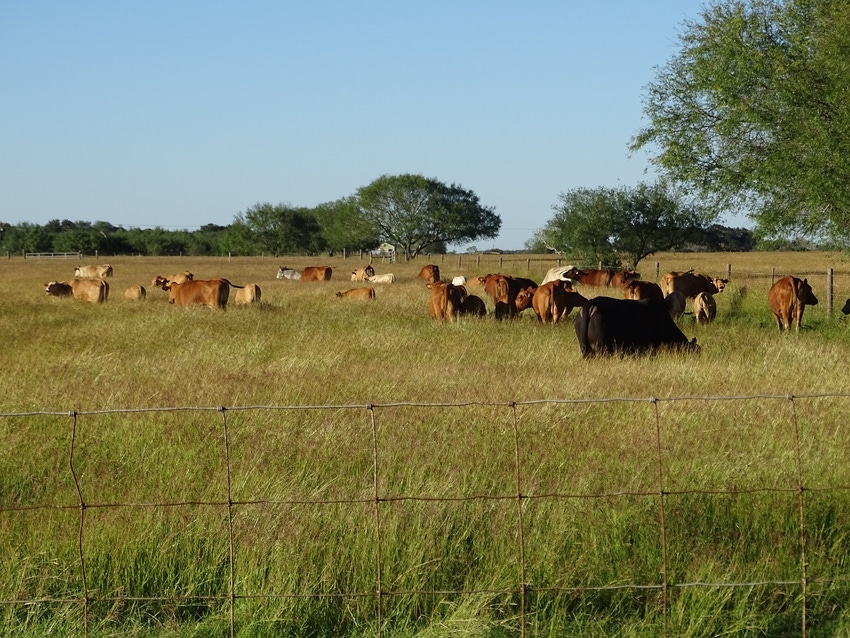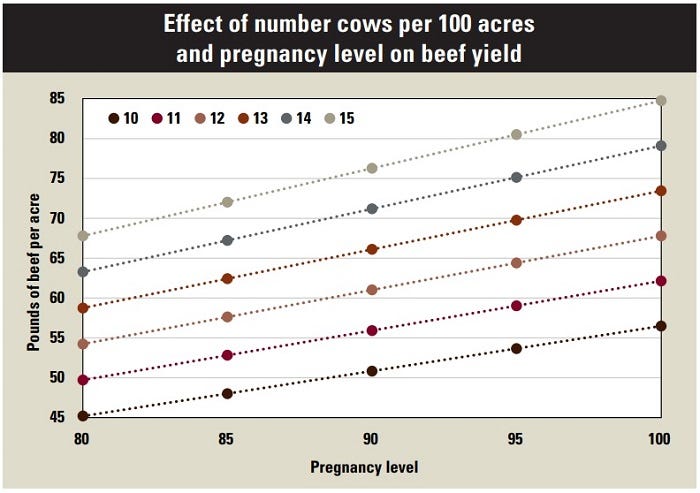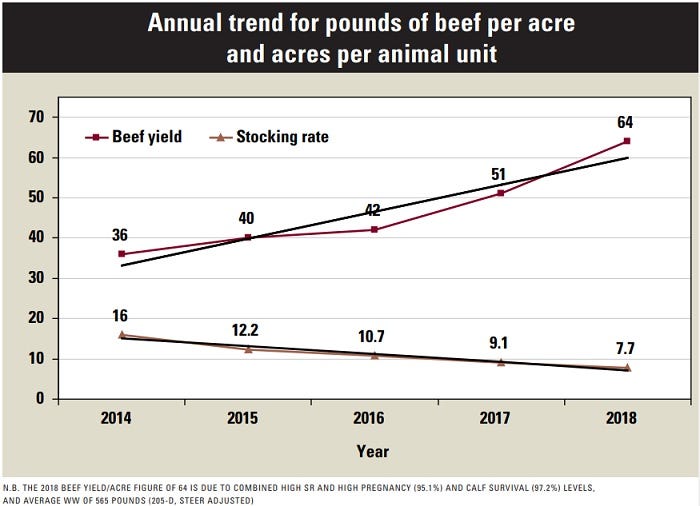May 15, 2019

By Alan Newport and Steven Lukefahr
Productivity measures in the beef industry has been misunderstood for generations now, but Steven Lukefahr in southern Texas is using data from his own ranch to reiterate the positive effects of higher stocking rate with cattle that have high reproductivity and heat adaptation.
Lukefahr operates a beef ranch near Kingsville and teaches at Texas A&M University-Kingsville. Beef Producer has covered some of his work in the past. He breeds for adaptability to his management in a subtropical environment, smaller birthweight, and rapid growth after birth within the relative confines of his system. For the record, Lukefahr's ranch is a grazing operation with very few inputs.
Lukefahr recently produced a study of his own ranch data that analyzed the productivity effects from these four scales:
Increases versus decreases in stocking rate
Higher versus lower beef yield per acre
Higher versus lower pregnancy rate
Higher versus lower calf survival
Here he tells the story of variables simulation he ran based on his ranch data.
Lukefahr says: On my ranch the 2018 the stocking rate was 7.75 acres per cow, and the average 205-day adjusted weaning weight was 565 pounds.
I analyzed a range of cow pregnancy values of 80%, 85%, 90%, 95% and 100%, and also a range of calf survival to weaning age values of 90%, 92.5%, 95%, 97.5%, and 100%. Although these values may seem arbitrary, they attempt to reflect a common range of values on progressive ranches on improved (introduced) pastures.

In 2018 on Lukefahr Ranch, pregnancy and calf survival values were 95.1 and 97.2%, respectively, while beef yield (BY) was 64 pounds per acre.
Results of my simulation showed these relationships:
Minimum BY is 40.68 lbs/ac when stocking rate is 10 cows on 100 acres (at 90% pregnancy and 80% calf survival levels).
Maximum BY is 84.75 lbs/ac when stocking rate is 15 cows on 100 acres (at 100% pregnancy and calf survival levels).
The 2018 BY figure of 64 pounds per acre would indicate there is opportunity for my operation to make further progress. However, both my pregnancy and calf survival levels exceed 95% so the opportunity lies more in increasing cow stocking rate (more animal units per land area). This can occur by continuing to improve carrying capacity and/or forage quality of pastures and to further reduce cow mature weights, although there are of course limits to these two factors as well.
The yellow graph of the "Annual trend for pounts of beef per acre and acres per animal unit" shows an increasing level of pounds beef produced per acre on the ranch and at the same time an increasing stocking rate. The stocking rate increase is represented by a decreasing number of acres required per animal unit.

Here are several other interesting relationships of potential changes in reproductive efficiency and calf survival we can see from my analysis.
Across pregnancy and calf survival levels (mean simulated values of 90% and 95%), as the stocking rate decreases by one animal unit, an increase of 4.8 pounds of beef per acre is predicted.
In comparing 10 and 15 cows per 100 acres there is a larger opportunity in the latter case to improve BY. From the simulation, for every 5% increase in pregnancy level it is predicted that BY would increase at 4.24 pounds per acre where 15 cows are stocked versus 2.83 pounds per acres where only 10 cows are stocked. The reason for the enhanced land efficiency is simply because there are more cows involved that can potentially produce more calves.
Overall, as pregnancy level increases by 5%, an increase in BY per year of 3.4 pounds is predicted.
Overall, as calf survival level increases by 5%, an increase in BY per year of 3.2 pounds is predicted.
Here are more ways of understanding the effects of changes up or down in pregnancy and calf survival rates. If matching pregnancy and calf survival values were used of 80%, 85%, 90%, 95% and 100% we can see these relationships:
At the level of 10 cows on 100 acres and when calf survival is 100%, if one additional calf is produced the effect is to increase BY from 50.85 to 56.5 pounds per acre, a difference of 5.65 pounds.
However, at these levels when calf survival decreases from 100% to 90%, the decline in BY is the same absolute difference of 5.65 pounds. Essentially at this cow stocking rate if what was gained through the pregnancy rate increase was lost through decreased calf survival the effect is no change in BY.
However, at a higher cow stocking rate of 15 cows on 100 acres, a 10% change in calf survival would have a more pronounced effect on BY because potentially more calves can be produced.
Read more on the Lukefahr Ranch website.
You May Also Like




